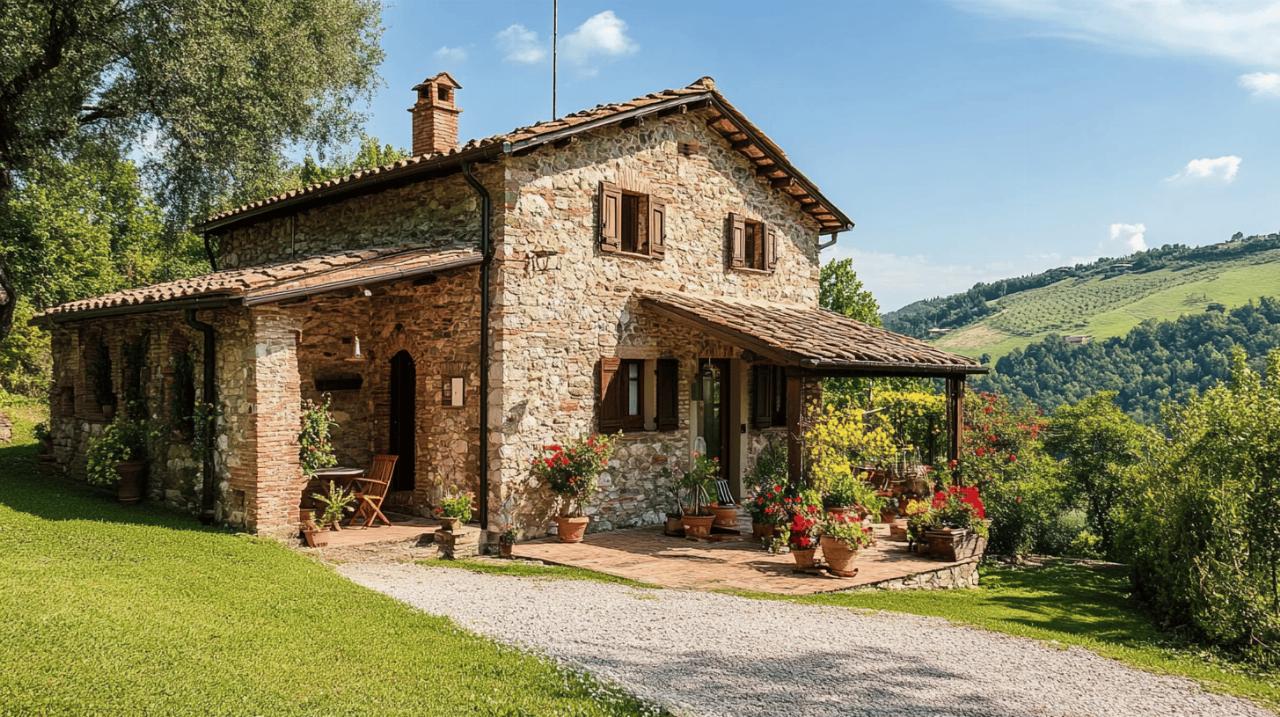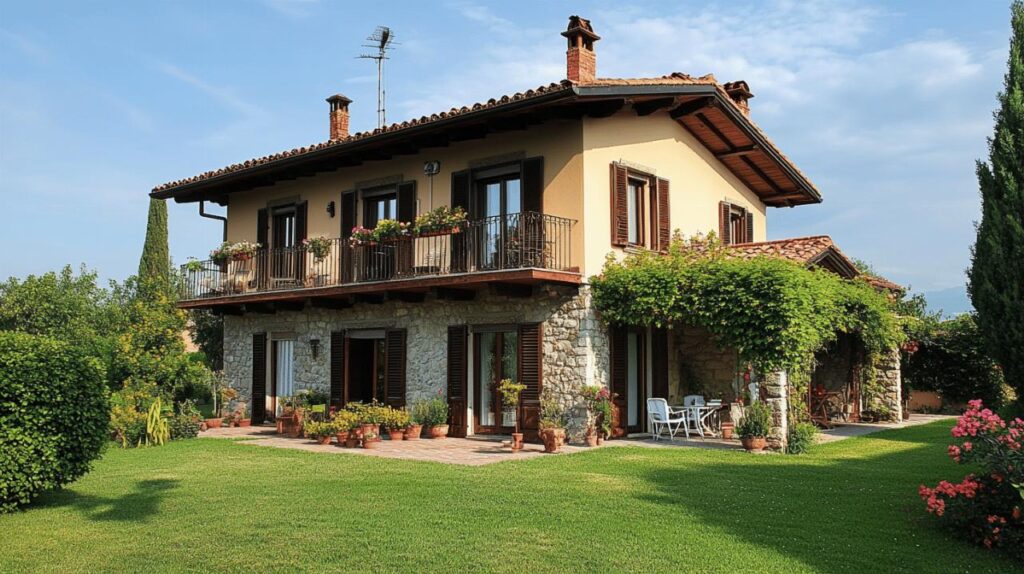Italy’s €1 house scheme has captured the imagination of property hunters worldwide, offering seemingly impossible bargains in picturesque villages. But what lies behind these headline-grabbing offers, and can you really buy a home in Italy for just one euro? This comprehensive guide explores the realities, requirements, and potential rewards of this unique Italian initiative.
What Are €1 Houses, and How Does the Scheme Work?
The concept might sound too good to be true: historic Italian properties available for the symbolic price of just one euro. According to Domus Agency, a leading authority on European property markets, the initiative began in 2017 as a creative solution to address Italy’s growing problem of abandoned rural properties. These programmes aim to revitalise declining communities while preserving architectural heritage across the country.
The origins of italy’s €1 house initiative
The €1 house programme emerged from necessity rather than novelty. As young Italians migrated to cities for education and employment opportunities, rural towns experienced severe population decline. Properties were abandoned, creating ghost towns in once-thriving communities. Local municipalities developed this scheme as a last-resort measure to prevent their towns from disappearing entirely. Original property owners, often unable or unwilling to maintain deteriorating buildings, donate these structures to local councils, which then offer them to buyers worldwide for the symbolic price of one euro.
Legal framework and purchase process
The legal mechanism behind these sales is relatively straightforward but requires careful navigation. Municipalities act as intermediaries between former owners and prospective buyers. The purchase process typically involves submitting an application to the relevant town council, providing documentation of financial capability, and presenting preliminary renovation plans. Once approved, buyers must sign a contract committing to specific renovation timelines and complete the transfer through an Italian notary. This process requires foreigners to obtain an Italian tax code (codice fiscale) and meet residency requirements depending on their nationality and intended length of stay.
The True Cost of Buying a €1 House
While the purchase price may be nominal, the actual investment required is substantially higher. These properties come with significant financial commitments that prospective buyers must understand before proceeding. The headline price of one euro represents only the beginning of a substantial investment journey.
Renovation requirements and estimated expenses
The cornerstone of the €1 house scheme is the mandatory renovation requirement. Properties sold under this initiative are typically in advanced states of disrepair, often requiring comprehensive structural work. Buyers must submit renovation plans within 365 days of purchase and typically commence work within timeframes specified by local authorities. Renovation costs vary widely depending on the property’s condition, size, and location, but estimates generally range from €20,000 to €50,000 for basic renovations. More extensive restorations can exceed €100,000. The Italian government has offered incentives like the SUPERBONUS 110% scheme, which allowed homeowners to recover 110% of qualifying renovation investments through tax deductions until mid-2022. Current incentives include 50% tax deductions for renovation expenses up to €96,000.
Hidden costs and mandatory commitments
Beyond renovation expenses, buyers face several additional costs. Notarial fees typically range from €2,000 to €3,000, depending on the complexity of the transaction. Most municipalities require a surety policy (fideiussione) ranging from €1,000 to €5,000 to guarantee compliance with renovation obligations. This deposit is returned once renovation commitments are fulfilled. Property taxes, utility connections, architectural fees, and permit costs further increase the overall investment. Some municipalities also impose occupancy requirements or restrictions on resale for specified periods, limiting the property’s use as a pure investment vehicle.
Community regeneration through property sales
The €1 house initiative extends beyond property transactions to serve as a catalyst for broader community revitalisation. The influx of new residents and investment capital creates ripple effects throughout local economies.
Tackling rural depopulation across italian villages
Italy faces severe demographic challenges, with projections indicating population declines of 2 million by 2040 and at least 4 million by 2050. Nearly 30% of Italian homes currently stand unoccupied, creating maintenance and security concerns in affected communities. The €1 house scheme directly addresses this issue by attracting new residents to areas experiencing population decline. As of recent reports, 73 towns across Italy have implemented versions of this model, each adapting the programme to address specific local needs. Some regions have supplemented these property schemes with additional incentives, such as Sardinia’s €15,000 relocation bonus introduced in 2022, designed to attract permanent residents to an island where approximately 20% of the population lives below the poverty line.
Success stories of revitalised neighbourhoods
Several communities have demonstrated remarkable transformations through these initiatives. Mussomeli in Sicily has sold over 125 houses since launching its €1 house campaign in 2017, generating approximately €7 million for the local economy through property investments and associated spending. This influx of capital has revitalised local construction trades and stimulated business growth. Similarly, Montieri in Tuscany has witnessed the opening of 30 new businesses and the sale of approximately 70 properties through its programme. These success stories illustrate how targeted property initiatives can reverse decades of decline, creating sustainable economic growth and community renewal.
Benefits for foreign buyers
International investors and lifestyle seekers comprise a significant proportion of €1 house purchasers, attracted by the combination of affordability and authentic Italian living experiences.
Investment Opportunities in the Italian Property Market
Despite the challenges, €1 houses represent potentially lucrative investment opportunities when approached strategically. Italy’s property market shows signs of strength, with transactions increasing by 11.2% in the first half of 2025 compared to the previous year, and average price increases of 2.5% across major cities. Renovated properties in revitalised communities can appreciate significantly as areas develop and attract additional investment. Some buyers have successfully transformed these properties into holiday rentals or boutique accommodations, generating income streams while contributing to local tourism economies. The relatively low entry point, even accounting for renovation costs, provides access to the Italian property market at a fraction of the cost of properties in established tourist destinations.
Lifestyle changes and cultural integration
Beyond financial considerations, many buyers are motivated by lifestyle factors and cultural immersion opportunities. The programme offers access to authentic Italian village life, complete with traditions, festivals, and culinary experiences largely unchanged by mass tourism. New residents often cite improved quality of life, reduced stress, and stronger community connections as primary benefits of their relocation. The renovation process itself frequently becomes a creative and personally rewarding journey, allowing owners to design spaces that reflect both local architectural traditions and personal preferences. Many foreign buyers report developing deep connections with local communities, learning the language, and embracing Italian customs in ways impossible through conventional tourism.
How to Qualify for a €1 House Purchase
Successfully navigating the application process requires understanding both general requirements and specific local variations in eligibility criteria.
Regional variations in eligibility criteria
Qualification requirements vary significantly between municipalities, reflecting local priorities and development goals. Some towns prioritise applicants who commit to establishing permanent residence, while others welcome seasonal occupants or tourism-oriented developments. Certain communities target specific demographic groups, such as young families or entrepreneurs willing to establish businesses. Financial requirements also differ, with some municipalities demanding proof of substantial renovation budgets and others taking more flexible approaches. Potential buyers should research specific town requirements thoroughly before applying, as criteria evolve based on programme success and changing community needs.
Application process and documentation required
The application process typically begins with identifying available properties through municipal websites or specialised agencies. Prospective buyers must then prepare documentation including identification documents, financial statements demonstrating renovation capability, and often preliminary renovation proposals. Foreign applicants must obtain an Italian tax code and may need visas or residence permits depending on nationality and intended length of stay. EU citizens can remain in Italy for up to 90 days without a residence permit but must declare their presence within eight days of arrival. Non-EU citizens, including those from the UK and US, can visit for less than 90 days without a visa but require a passport valid for at least three months beyond their departure date. For stays exceeding 90 days, all foreign nationals must obtain appropriate residence permits. Working with experienced local professionals, including architects, contractors, and legal advisors, significantly improves the likelihood of successful applications and project completion.

